new posts in all blogs
Viewing: Blog Posts Tagged with: 2008, Most Recent at Top [Help]
Results 1 - 25 of 352
How to use this Page
You are viewing the most recent posts tagged with the words: 2008 in the JacketFlap blog reader. What is a tag? Think of a tag as a keyword or category label. Tags can both help you find posts on JacketFlap.com as well as provide an easy way for you to "remember" and classify posts for later recall. Try adding a tag yourself by clicking "Add a tag" below a post's header. Scroll down through the list of Recent Posts in the left column and click on a post title that sounds interesting. You can view all posts from a specific blog by clicking the Blog name in the right column, or you can click a 'More Posts from this Blog' link in any individual post.

By:
Becky Laney,
on 9/6/2016
Blog:
Becky's Book Reviews
(
Login to Add to MyJacketFlap)
JacketFlap tags:
series books,
2008,
MG Fiction,
library book,
MG Fantasy,
MG Adventure,
books reviewed in 2016,
books reread in 2016,
MG Action,
Add a tag
Alcatraz Versus the Scrivener's Bones. Brandon Sanderson. 2008. Scholastic. 322 pages. [Source: Library]
First sentence: So, there I was, slumped in my chair, waiting in a drab airport terminal, munching absently on a bag of stale potato chips.
Premise/plot: This is the second book in the fantasy series. Alcatraz has had several months to get used to the truth. (The Hushlands (including the U.S.) are ruled by EVIL LIBRARIANS who control all information and manipulate and manufacture things their own way.) Smedry was raised in the Hushlands, but his 'real' place is with the Free Kingdomers. He's a SMEDRY. His family is one of the oldest and most powerful. He comes from a line of Oculators, for one thing, and each Smedry has their own unique talent. His grandfather's talent is arriving late. His own talent is for breaking things.
This is his second adventure...Bastille is present, but, readers meet many new sidekicks in this one. The mission this time is to find Alcatraz's GRANDFATHER and possibly his FATHER who have gone missing. They are believed to be in the Library of Alexandria. Kaz is an uncle. Australia is another relation, possibly a cousin? Also there is Bastille's mother--also a knight. The novel is definitely action-packed. Perhaps even more so than the first book.
My thoughts: Definitely like this series very much. I know I've read all four books before, but, it's been so long it was like reading them again for the very first time.
© 2016 Becky Laney of
Becky's Book Reviews
BBC Radio 3's Cyrano de Bergerac by Edmond Rostand, translated by Anthony Burgess. Adapted for radio by John Tydeman. First aired 2008.
Cyrano... Kenneth Branagh
Christian... Tom Hiddleston
Roxane... Jodhi May
De Guiche... John Shrapnel
Rageuneau... Jimmy Yuill
Le Bret... Gerard Horan
and others....
After watching the movie and reading the play, I was DELIGHTED to find
a radio drama of what is fast becoming my favorite play!
Cyrano is played by Kenneth Branagh. He does a great job with the role as he did a great job with Benedick in Much Ado About Nothing!
Christian is played by Tom Hiddleston. I can easily imagine him as a perfect Christian!
All the actors did a GREAT job bringing this drama to life. It's a great production. It's just a little over two hours long.
Premise/plot: Cyrano, our hero, is madly in love with his cousin, Roxane. Judging himself too ugly to stand a chance with her--or with any woman--he is content to love her from afar. Roxane contacts him, through a maid, letting him know that they must meet. For a few hours he dreams that maybe just maybe he has a small chance with her. But she is meeting him to tell him that she is desperately in love with a young cadet (soon to join his regiment) named Christian. Will he befriend Christian and help them to be together?!?! Christian is "in love" with Roxane too. They've never spoken to each other. They've only seen each other a time or two. And yet both know it's LOVE. Cyrano questions her. What if he turns out to be less than her ideal??? She'll DIE she responds.
Cyrano does as she asks...and more. He turns Christian into the man of her dreams...by giving him the words to speak to win her heart.
There is a third man in Roxane's life, Count De Guiche. He loves her, but, is married. He adds drama and conflict to this French romance....
I would definitely recommend giving this one a listen if you can.
© 2016 Becky Laney of
Becky's Book Reviews
Duel: Burr and Hamilton's Deadly War of Words. Dennis Brindell Fradin. Illustrated by Larry Day. 2008. Walker. 40 pages. [Source: Library]
First sentence: The two enemies had much in common, starting with difficult childhoods.
Premise/plot: A picture book biography focusing on the lives of two founding fathers, Aaron Burr and Alexander Hamilton. The book slowly but surely builds its way towards the DUEL between the two men; the duel that will end the life of one and ruin the career of the other. As part of the context for understanding the duel, a little bit of American history is unpacked for readers, highlighting the roles both men had during American's war for independence and the turbulent decades afterwards as the United States of America came into existence. The book illustrates that politics always involves DRAMA.
My thoughts: I liked this one. I really do. I think it is definitely a picture book for older readers though. Not all picture books are intended as fun readalouds for preschoolers and kindergartners. The text keeps the story moving--it's quite lively at times. The author notes that both men were to blame for the duel.
I definitely liked the illustrations by Larry Day.
Text: 4 out of 5
Illustrations: 4 out of 5
Total: 8 out of 10
© 2016 Becky Laney of
Becky's Book Reviews
The Nutcracker. Retold by Stephanie Spinner. Illustrated by Peter Malone. 2008. Random House. 40 pages. [Source: Library]
First sentence: It was Christmas Eve, Marie's favorite night of the year. She was so excited that she did a pirouette on her way to the drawing room, where she joined her brother, Fritz, at the big double doors.
My thoughts: I love, love, love the music by Peter Ilyich Tchaikovsky. I do. I listen to it frequently--all throughout the year. Why limit the music itself to just one time of year?! That being said, I like the ballet. I've only seen it performed once or perhaps twice. Though there are plenty of movie adaptations of it as well. Perhaps I should try to watch some of these. (Do you have a favorite? a least favorite?)
Stephanie Spinner's picture book retells the story of the ballet for young readers. It is not a retelling of the original Nutcracker story. Which I think is probably for the best! Since most people, I imagine, are more familiar with the ballet than with the original work by E.T.A. Hoffmann. (Hoffmann's work reads more like Alice in Wonderland.)
The illustrations. There were a few spreads that I just loved, loved, loved. But for the most part, I tended to "like" more than "love" the illustrations.
Text: 3 out of 5
Illustrations: 3 out of 5
Total: 6 out of 10
© 2015 Becky Laney of
Becky's Book Reviews
Kitty Cat, Kitty Cat, Are You Waking Up. Bill Martin Jr., and Michael Sampson. Illustrated by Laura J. Bryant. 2008. 24 pages. [Source: Library]
First sentence: Kitty Cat, Kitty Cat, are you waking up? Not yet, Mother, I'm a sleepy buttercup.
Premise/plot: Does this kitty cat have a hard time getting up out of bed and getting ready for school? Oh, yes! One of the reasons why this book may just be so easy to relate to for both children and adults.
My thoughts: Loved it. I think I liked it much more than Kitty Cat, Kitty Cat, Are You Going To Sleep. I enjoyed the rhymes very much. My favorite:
Kitty Cat, Kitty Cat, are you out of bed?
Not yet, Mother, I'm standing on my head.
And the illustrations are just so very, very sweet and precious.
Text: 4 out of 5
Illustrations: 5 out of 5
Total: 9 out of 10
© 2015 Becky Laney of
Becky's Book Reviews
Board Book: The Doghouse. Jan Thomas. 2008/2015. Houghton Mifflin Harcourt. 36 pages. [Source: Review copy]
First sentence:
KickOh no! The ball went into THE DOGHOUSE.Who will get it out?Premise/Plot: A cow, a mouse, a duck, and a pig are playing ball together....when....it happens. The ball is kicked into the doghouse. Who is brave? Who is scared? Will they get their ball back? Read and see!
My thoughts: I do love Jan Thomas. And The Doghouse is a great example of just why. The Doghouse is funny, playful, and dramatic. Some drama can help keep read alouds fun and spirited. This one is just predictable enough--repetitive enough--to keep it fun.
The same characters can be found in A Birthday for Cow. (Cows feature into two other Thomas picture books: Let's Sing A Lullaby with the Brave Cowboy and my personal favorite, Is Everyone Ready for Fun?)
© 2015 Becky Laney of
Becky's Book Reviews

By:
Becky Laney,
on 5/10/2015
Blog:
Becky's Book Reviews
(
Login to Add to MyJacketFlap)
JacketFlap tags:
children's classic,
1965,
MG Fiction,
Square Fish,
review copy,
mg historical,
j historical,
books reviewed in 2015,
Newbery,
J Fiction,
2008,
Add a tag
I, Juan de Pareja. Elizabeth Borton de Trevino. 1965/2008. Square Fish. 192 pages. [Source: Review copy]
I, Juan de Pareja, was born into slavery early in the seventeenth century. I am not certain of the year.I am so glad I read I, Juan de Pareja. The cover may not have said,
read me, read me, but I found this historical novel to be quite compelling overall.
I, Juan de Paraja is set in Spain (and Italy) in the seventeenth century. Juan's master--for the most part--was
Diego Velazquez, an artist. Both were real men. (
Juan de Pareja) The first part of the novel introduces readers to Juan, and has him traveling to meet his new master after his former mistress' death. The rest of the novel spans several decades of his life and service. The focus is mainly on art--on painting portraits. Juan becomes quite interested in painting, and longs to be allowed to learn how to paint himself. (He's not allowed because he's a slave.) He observes and absorbs, waiting, perhaps for an opportunity to try for himself. Opportunity comes, and his secret life begins...
I found the book to be a quick read. I found it to be fascinating as well. I liked reading about both men, and I liked how focused it was on art.
© 2015 Becky Laney of
Becky's Book Reviews
Dragon Flight. Jessica Day George. Bloomsbury USA. 272 pages. [Source: Library]
I've spent the last week rereading Jessica Day George's oh-so-lovely dragon series starring Creel, Prince Luka, and their dragon friends.
One war with the dragons is over and done with, but, a second is about to begin. And this time, it may not be an evil human controlling the dragons through alchemy, but, an evil dragon controlling a human king controlling dragons through alchemy. Not that Creel could guess that before she slips off to her second war as a spy. (She doesn't go into enemy territory alone, she takes some of her dragon friends.)
I liked this one. Did I love, love, love it as much as Dragon Slippers? Probably not. But I still really loved it. I loved meeting Shardas' mate--the queen of dragons. I loved spending time with Creel and her friends, her dragon friends, and her human friends. The book has plenty of action and drama. Quite a showdown! But it isn't done without attention to characters. Overall, I definitely recommend this book and this series.
© 2015 Becky Laney of
Becky's Book Reviews

I have finally found an environmental book for older readers, and it is terrific.
Sixteen-year-old Laura, the journal keeping main character in
The Carbon Diaries 2015 by
Saci Lloyd, is a member of a punk band. She has an appalling older sister, and her parents are falling apart. Sounds pretty generic YA, doesn't it? What makes this book riveting is its setting and its main character.
Are Good Environmental Books All About Setting?
The 2015 Britain of
The Carbon Diaries is one suffering from energy shortages and horrific climate problems, as is the rest of the world. Britain, however, is the first country to start carbon rationing. The book is Laura's account of her family and neighbors dealing with limited access to energy while suffering through an extreme winter, a drought, and torrential rain. Her older sister is appalling because she is bitter and angry about her gap year in America being cancelled. Her parents are falling apart because they're having trouble coping with the social change they're being hammered with. Dad, for instance, is the head of a travel and tourism school. With carbon restrictions, people can't travel. That pretty much puts an end to the tourist industry in Britain, and he loses his job.
The book isn't a cautionary tale, in my humble opinion. It's much more of a thriller. What's going to happen next and how will the characters survive it? Though Laura comments on the selfishness of others a couple of times and wants very much for the rest of the world to get on board with carbon rationing, this is not a "Let's save the planet!" story. There is no instructive message.
I'm sure many reviewers probably write about
The Carbon Diaries' environmental themes. I always have trouble determining what an environmental theme would be. I've seen some writers calls
The Carbon Diaries' theme "climate change." That seems more like a subject to me. I would say the theme of
The Carbon Diaries involves a teenager struggling to find her place as an older person in her family and her place in society, one that is dramatically changing. Those are traditional YA themes, not environmental ones. It's the environmental setting that makes those traditional YA themes interesting and makes this book environmental.
Isn't climate fiction, fiction dealing with climate change, all about setting?
A Good Character Always Does Wonders For A Book
Laura is like an edgier, smarter
Georgia Nicholson. The format of the book is even similar to the Georgia Nicholson books. It's a journal, of course, and there are several pages at the end translating British terms for American readers, which you find in Georgia's books. This is not a complaint. I like Georgia. I like Laura.
A Good Book Doesn't Have To Teach You AnythingThough
The Carbon Diaries doesn't insist that readers do anything, the characters' struggle was so intense that it has an impact. I hadn't read much before I started obsessing about whether or not I'd turned the heat down at night. I freaked out a bit over that power outage in Washington earlier this week. And, yikes! They're rationing water in California!!
Very few people like to be preached at or taught. If a piece of fiction is well done, it creates a response in readers without doing either of those things.
YUM: Your Ultimate Manual for Good Nutrition. Daina Kalnins. 2008. Lobster Press. 192 pages. [Source: Review copy]
YUM is an informative nonfiction read for upper elementary and middle grade students. Its focus is on teaching young people the basics of nutrition, on how to be more aware of what they're putting in their bodies. It is not a diet book, a
how to lose weight book. If nothing else, the book will teach readers HOW to read food labels and basic definitions of key terms.
In the first chapter, the focus is on macronutrients: carbohydrates, fats, and protein. In the second chapter, the focus is on micronutrients: Vitamin A, Vitamin B, Vitamin C, Vitamin D, Vitamin E, Vitamin K, Calcium, Iron, Zinc, Potassium, and Sodium. In the third chapter, the focus is on how the body digests food. In the fourth chapter, the author provides sample menus and recipes for breakfast, lunch, supper, and morning and afternoon snacks. In the fifth chapter, the practical advice continues on how to make changes and establish good habits. This last chapter covers a little bit of everything: food safety (how long to keep food, how to tell if food has gone bad, etc), grocery shopping, eating out, etc.
The book is written for kids and with kids in mind. The advice is specifically for what growing, active children need to be eating to be healthy.
Nutrition books can become dated quickly, this one isn't as up-to-date as I'd like. But it still has some good, basic information. One thing that makes it continue to be relevant is how reader-friendly it is.
My favorite chapter is probably the one on micronutrients. I loved learning what each nutrient does in the body, and which foods you should eat to get that nutrient.
© 2015 Becky Laney of
Becky's Book Reviews
Tumtum and Nutmeg: Adventures Beyond Nutmouse Hall. Emily Bearn. Illustrated by Nick Price. 2009. Little, Brown. 512 pages. [Source: Library]
I definitely enjoyed Tumtum and Nutmeg: Adventures Beyond Nutmouse Hall. Did I enjoy all three adventures equally? I'm not sure I can say that I did. The book contains three adventures--perhaps the first three adventures--of Mr. and Mrs. Nutmouse: Tumtum & Nutmeg, The Great Escape, and The Pirates' Treasure. Tumtum and Nutmeg are the nicknames this husband and wife have for one another. He is Tumtum. She is Nutmeg. The mice live in Nutmouse Hall, and Nutmouse Hall itself is in a closet (of sorts) in Rose Cottage. The mice are more well-to-do than the humans that reside there. Mr. Mildew lives at Rose Cottage with his daughter, Lucy, and son, Arthur. Tumtum and Nutmeg feel sorry for them all, but, especially for the two children who live in the attic. They decide to be good Samaritans. They will fix what needs fixing or mending. They will do what they can, when they can, to make things better. The children definitely notice. They believe it is the work of a fairy. That's enough of a background to appreciate the three stories in this one.
In Tumtum and Nutmeg, readers meet the mice, the family, the children. It focuses on what happens when Aunt Ivy comes to stay. The dangers that come about from her visit. And what the mice do about it. How they handle the situation. Readers also meet General Marchmouse.
In The Great Escape, the focus is on General Marchmouse. He was captured by the children in the attic. This visiting mouse against the good advice of Mr. and Mrs. Nutmouse became too fond of playing with the children's toys. He was NOT a careful mouse. The children take him to school and he's put into a cage with a dozen or so gerbils. I can't remember if it was a dozen gerbils or twenty-four gerbils. But A LOT. When Mr. and Mrs. Nutmouse learn of the situation, what will they do, how will they make it right?!
In The Pirates Treasure, the focus is on a camping trip gone wrong. Mr. and Mrs. Nutmouse, for better or worse, feel certain that the children NEED them so much that they just have to go along with the children on an overnight camping trip. All might have been well if it hadn't been for that bothersome General Marchmouse. Quite accidentally on Tumtum and Nutmeg's part, they find themselves at sea, or, at pond. They are on board the toy boat that the children float on the pond. They end up--with General Marchmosue, of course--shipwrecked on an island. What will they do? How can they get back to their home? Is the island dangerous?
I like the premise behind this series. I like the characters of Tumtum and Nutmeg. General Marchmouse is infuriating. But. I can also see that he is what makes these into adventure books. He brings the action, and, perhaps also the laughs.
© 2014 Becky Laney of
Becky's Book Reviews
The Man Who Invented Christmas. Les Standiford. 2008. Crown. 241 pages. [Source: Library]
Different readers will have different expectations when they see the full title of this one: The Man Who Invented Christmas: How Charles Dickens's A Christmas Carol Rescued His Career and Revived Our Holiday Spirits.
The focus is not so much on Christmas, as it is on Charles Dickens: his private and public life, his writing career, his inspirations, his fears and worries, his relationship with his publishers. The focus isn't solely on A Christmas Carol. Yes, this work gets discussed in detail. But the same can be said of many of Dickens' novels. The book, despite the title, focuses on Dickens' career as a writer or novelist. This book mentions and in some cases discusses most of Dickens' published works. Not just his books published BEFORE A Christmas Carol, but his whole career.
A Christmas Carol gets special treatment in this one, perhaps, not because it has a Christmas theme, but, because it is a significant to his career. Before A Christmas Carol, he'd had a few really big bestsellers. But. He'd also experienced some failures. His last three books were disappointing to his fans. They didn't sell as well. The critics didn't like them. His publishers were discouraged and worried. Dickens needed his next book to be something wonderful, something that would sell, something that would be loved by one and all. He needed a success: a feel-good success, something to give him confidence and something to give his publishers confidence in him again, and a financial success, something to get him out of debt, something to pay his bills.
The secondary focus of this one is not Christmas. Readers might expect it to be related to Christmas, the history of Christmas, its invention, or reinvention. But. Something gets more time and attention than Christmas. And that is the writing and/or publishing industry. The book gives readers a history lesson in publishing. How books were written, illustrated, printed, published, sold. Not just what went on BEFORE it was published, but also what typically happened next. How novels were adapted to the stage by others, by many others. How little control--if any--that the publisher and author had over their books, their stories, their characters and plots. Plays could do justice, at times, to the books they were based upon. But they could also be absolutely dreadful. The lack of copyright laws or international copyright laws. How publishers in other countries could steal entire books, republish them, not paying the author anything at all. The book even has a chapter or two on fan fiction. Not that he calls it fan fiction. But he writes of how other writers could "borrow" characters and give them further adventures and publish them.
Does the book talk about Christmas at all? Yes. It does. It tells of two extremes: those in the past who celebrated Christmas too wildly, too wantonly, and those in the past who refused to celebrate it all, who would have it be illegal. Either extreme seems a bit hard to believe, perhaps, for modern readers. The book tells of traditions. Some traditions being somewhat established before A Christmas Carol, and other traditions becoming more established by being described in A Christmas Carol. What I probably found most interesting was his mention of how traditionally it was goose served for the Christmas feast UNTIL the publishing of A Christmas Carol. When Scrooge buys a turkey to give to Bob Cratchit and his family, it seems he inspired his readers to change their traditions. Turkeys becoming more and more popular.
For readers interested in the life and death of Charles Dickens, his whole career, this one has some appeal. It provides plenty of details about his books and the publishing industry, how he was received by the public.
For readers looking for a quick, feel-good holiday read, this one may prove to be a chore to get through.
I liked it well enough. I've read a good many of his novels. I have some interest in his life. It worked for me. It was packed with plenty of information.
© 2014 Becky Laney of
Becky's Book Reviews
Emperors of the Ice. Richard Farr. 2008. FSG. [Source: Review copy]
I have mixed feelings on Emperors of the Ice: A True Story of Disaster and Survival in the Antarctic, 1910-13. On the one hand, it is a fictional memoir based on an actual memoir. Much research was done to write this one. Perhaps just as much research as if it was a traditional nonfiction book. The author's love of the subject was evident throughout. The book is told primarily if not exclusively through the eyes of one of the men on the expedition, Apsley Cherry-Garrard. The exception being the few places where readers learn what happened to other members of the expedition. On the other hand, was it absolutely necessary to fictionalize a memoir in order to tell the story? I think there were things to be gained by such a decision, and, perhaps a few things lost.
Aside from the fact that this one doesn't really quite fit in as fiction or nonfiction, Emperors of the Ice was an interesting read. It was not quite as depressing as you might expect. I've read more depressing books on this subject certainly. The focus of this book is more on science and exploration than on the race to be first to the South Pole. This book argues that it was never about being first or being best. This book tells the basic story, but, it includes plenty of details. For example, I learned that one of the teams--science teams--went to the Antarctic to study emperor penguins. Their goal was to learn about the penguins and their eggs. It wasn't exactly learning by observation. Cherry was part of that team. I learned quite a few things.
© 2014 Becky Laney of
Becky's Book Reviews
Everything on a Waffle. Polly Horvath. 2001/2008. Square Fish. 176 pages. [Source: Review copy]
There were things about Polly Horvath's Everything On a Waffle that I liked. I liked the heroine, Primrose Squarp. I liked how unique she was. She had a unique way of seeing the world around her, a unique perspective on just about everyone in town. The novel opens with tragedy, what most people would call tragedy. Primrose loses her mom and dad to a storm. Her dad was out sailing, her mom saw how horrible the storm was, got worried and left in another boat to go find him. Every single person in town, and, most every person from out of town who hears the story, concludes that Primrose's parents are dead. Their bodies have not been recovered, but, they are most certainly dead. Primrose arrives at the opposite conclusion. Her parents are not dead. They are not. They may be marooned on an island. They may be missing for a time. But her parents are most definitely alive. Many well intentioned folks in town encourage Primrose to come to terms with what has happened, to grieve her parents, to react and feel. But instead of Primrose coming to terms with her loss, it is the town who ends up coming to terms with Primrose and her unending optimism. No one is quite sure what to make of Primrose, she's just Primrose.
After a few weeks, Uncle Jack comes to stay with Primrose. Uncle Jack doesn't demand much from Primrose. He doesn't demand that she get in touch with her emotions and talk it all out. He lets Primrose be herself. And he accepts Primrose pretty much as is. And she does the same. Both are flawed beings, if you will. They seem to fit together well enough.
Miss Honeycut watches Primrose closely. She does not think Primrose is doing well at all. She thinks Primrose needs something that Uncle Jack could never give her.
One of the things that sets the book apart are the recipes at the end of every chapter. Also the small town quirky charm. I absolutely loved the idea of THE GIRL IN THE SWING restaurant. I loved the owner. I loved the idea that EVERYTHING on the menu came with waffles. Very unique.
As I said, I liked this one. I didn't love it.
© 2014 Becky Laney of
Becky's Book Reviews
 I like books that stay on task, as I always put it. It may be that as a reader I get distracted if there are too many different things going on. I found the cookery part of Getting the Girl, A Guide to Private Investigation, Surveillance, and Cookery by Susan Juby distracting.
I like books that stay on task, as I always put it. It may be that as a reader I get distracted if there are too many different things going on. I found the cookery part of Getting the Girl, A Guide to Private Investigation, Surveillance, and Cookery by Susan Juby distracting.
Sherman Mack is a wonderful character, like a younger, less raunchy, undamaged Seth from Home to Woefield. The mystery he's investigating, who singles out girls to be turned on by the general population, is a serious one, if maybe a little over the top. Sherm's interest in cooking ties in to the mystery by the end, but it seems unconnected until then. Same with his out-there Mom and the neighbor guy who serves as a father figure for Sherm.
Juby does a couple of interesting things here. First, she does a neat twist on the cliched mean girls stereotype. She also has created a world in which every popular kid in school, whether they earned their popularity with their looks, their athletic prowess, or something else, isn't hateful. They certainly aren't heroic or particularly positive in their behavior, but, again, they aren't the evil stereotype we're used to seeing.
I have another one of Juby's books here that I hope to get to in the next few weeks.
The Merry Monarch's Wife. (A Queens of England Novel). Jean Plaidy. 1991/2008. Crown. 352 pages. [Source: Bought]
MY LIFE WILL END WHERE IT BEGAN, FOR IN THE YEAR 1692 I left England where I had gone some thirty years before as a bride to the most romantic prince in Europe. I smile now to consider how ill-equipped I was for such a position, and when I look back I say to myself, “If I had done this…,” “If I had not done that…how much happier my life would have been.” But then, although I was not very young—I was twenty-four, which is a mature age for a princess to embark on marriage—I was quite innocent of the world and had hardly ever strayed from the walls of the convent where I had received my education, or the precincts of the royal palace. I enjoyed reading Jean Plaidy's The Merry Monarch's Wife. Catherine of Braganza was the queen of Charles II. For those familiar with the reign of Charles II, you can imagine what a life she led for better or worse. The book seeks to capture her personal perspective of her husband, of her marriage, of her adopted country. (She's coming from Portugal to England.)
Plaidy's depiction has Catherine truly in love with the King, and oh-so-aware of his shortcomings. In her reckoning, Charles II could not help himself at all, he was completely incapable of fidelity. Readers catch glimpses here and there of Charles' many, many mistresses. But not as much as you might imagine. That is, the focus is on HER and not truly on him and his activities. She is aware of his favorites at any given time, and at times she's sought out in conversation by mistresses in and out of favor.
There is definitely a lot of POLITICS in Merry Monarch's Wife. Readers learn about various plots and threats and conspiracies. Readers meet men and women who are ambitious and manipulative and power-hungry.
I was familiar, in a way, with some of the details of his reign. But not of what life was like for her before and after. Before her arrival in England and after Charles II's death. This book tells a fairly complete story.
Quotes:
We do not know what the future holds, but I believe that one day you are going to be Queen of England, and when you are, you will do your duty to God and your country.” “Oh yes,” I said fervently, “I will.” I had a mission now. Not only was I going to marry Prince Charles, but I was going to save his soul.
He always called himself an ugly fellow, and when one considered his features that could be true, but his charm was overwhelming. There could never have been a more attractive man. I know that I loved him and one is apt to be unaware of the faults of the object of one’s devotion, but I can vouch for it that I was not alone in my opinion. He used to talk of the ringing of bells, the flowers strewn in his path, the women who threw kisses at him, the shouts of loyalty. “Odds fish!” he said. It was a favorite oath of his. “They gave me such a welcome home that I thought it must have been my own fault that I had stayed away so long.”
He laughed. “You remind me of my mother. You and she will be good friends when you meet, I’ll swear. As for this Catholic ceremony…you see, my dear, you are Queen of this country and you must be married according to the religious observances of the place. But you say you will not be happy…and I cannot allow you to be unhappy. I will tell you how we will resolve this matter. There shall be a ceremony here in this bedchamber. It shall be as you wish, and the other one will take place as arranged on the same day. It means you will have to marry me twice. Could you bear that?” I felt my lips tremble. I was going to weep because I was so touched, so happy. “You are all that I hoped for…and all that I dreamed,” I said emotionally. He looked at me in mock dismay. “Do not have too good an opinion of me, I beg you. I fear you will find me a somewhat sinful fellow.” “Oh no. You are the kindest and best man in the world.” He leaned toward me and kissed my cheek. He was sober suddenly. He said: “You shame me.” Then he was merry again. His gravity seemed always to be fleeting, as though his gaiety was waiting impatiently to break in on it.
Charles is fond of you. He likes you very much…but he will never be faithful to you. It is not in him to be faithful…not to any woman. My father was like him. I saw how my mother lived. So I understand. Accept this weakness in him and he will be grateful to you, he will be kind.
We would drink tea, for I had brought this custom with me from Portugal. For a short time people had thought the beverage very strange, but they were soon aware of the pleasure of taking that soothing drink, and my ladies quickly became as ardent tea drinkers as I myself. Indeed the custom was spreading all over the country.
© 2014 Becky Laney of
Becky's Book Reviews

By:
Becky Laney,
on 6/20/2014
Blog:
Becky's Book Reviews
(
Login to Add to MyJacketFlap)
JacketFlap tags:
books reviewed in 2014,
books reread in 2014,
MG Realistic Fiction,
family,
dogs,
2008,
Scholastic,
MG Fiction,
review copy,
Add a tag
Julia Gillian (And the Art of Knowing) by Alison McGhee. 2008. Scholastic. 290 pages. [Source: Review copy]
Several years ago, I read the Julia Gillian series. The first book in the series is Julia Gillian And the Art of Knowing. The book introduces us to a lovely little heroine, Julia Gillian, who is something. She is not really like other children her age (she's about 10) and she's not really like other adults either. She is individual, unique, special. While I did not see myself in each and every bit of Julia Gillian, there was one thing in particular we share. (Or should I say shared.) Julia Gillian is afraid of books with sad endings. Julia Gillian has recently bought a book, a green book, I believe, with a dog on the cover. (As a child, I would have known to avoid it.) When she started the book, all was well. A few chapters in, and Julia has become WORRIED, very WORRIED about the dog in the story. She's afraid that the dog might...dare she say it...DIE in the end. The second she begins to worry, she stops reading. She puts the book aside. But. Julia Gillian can't stop thinking about the book, about the characters. Though she's not spending time with the book anymore, it's still haunting her. Her parents guess this, as do some of her older friends, and for some reason they make her finish the book. (The reason why sounded a bit unbelievable to me.) Can Julia Gillian survive reading a sad book, a sad dog-dying book?
Julia Gillian lives life. She is very, very, very close to her dog, Bigfoot. Her dog is her best, best friend. So it's understandable why she has such a hard time reading the book. Her fear is, in a way, not so much that the fictional dog will die as it is that HER beloved dog will die.
There are several little stories going on in Julia Gillian and the Art of Knowing. I liked how Julia reaches out to a neighborhood girl who is about to start kindergarten. They have two conversations, I believe, but in them we see Julia Gillian at her best.
I definitely enjoyed rereading this one.
© 2014 Becky Laney of
Becky's Book Reviews

By:
Becky Laney,
on 5/30/2014
Blog:
Becky's Book Reviews
(
Login to Add to MyJacketFlap)
JacketFlap tags:
J Fiction,
2008,
FSG,
J Realistic Fiction,
MG Fiction,
library book,
books reviewed in 2014,
books reread in 2014,
MG Realistic Fiction,
Add a tag
Greetings from Nowhere. Barbara O'Connor. 2008. FSG. 208 pages. [Source: Library]
Greetings From Nowhere is a charming book that I just love! It centers around Sleepy Time Motel in the Great Smoky Mountains. Aggie, the owner, is a widow. She is finding it difficult--really difficult--to keep the motel going. Sometimes months go by between guests. And the last time a guest came, it was by chance they stayed even one night. Financially, it makes sense for Aggie to consider selling. It is what she "needs" to do practically. But is her heart ready to let go of her dream? But this isn't Aggie's story. She is not the protagonist. This book has multiple young narrators. All end up at the Sleepy Time Motel. There is Kirby, the "troubled" boy, who is on his way to reform school; Loretta who is traveling in the Smoky Mountains with her parents; and Willow who has come with her Dad to inspect the motel before buying it. None of the guests are particularly happy-happy-cheerful. Not everyone is equally gloomy either. Every single person in the novel has recently undergone change or is about to undergo change.
Loretta, for example, perhaps the most "happy" of the bunch, has learned that her birth mother has died. She received a charm bracelet in the mail. She still knows so very little about her birth mother. Just the mystery of a bracelet, she's trying to puzzle together who her mother was, what she was like, what she liked, what she did, based on these charms. That is what has fueled this family vacation. They are following the trail of her birth mother.
Willow is perhaps the saddest. Her mother left her and her Dad. Nothing has been the same since she left. Her mother's name isn't allowed to be mentioned. There is something broken about her family. The Dad decides the family needs a HUGE change. Willow doesn't want a huge change; she doesn't even want a tiny change.
Kirby is perhaps the angriest or most hurt depending on your perspective. Does Kirby do bad things for attention? Yes. His mother. His father. His stepfather all seem to reject him, to want to be rid of him, to think that he's a big hopeless mess instead of a growing boy.
I liked this community-focused novel. I definitely recommend it!
I first reviewed Greetings From Nowhere in
May 2008.
© 2014 Becky Laney of
Becky's Book Reviews
Ten Cents A Dance. Christine Fletcher. 2008/2010. Bloomsbury USA. 368 pages. [Source: Review copy]
I first read and reviewed Ten Cents A Dance in
November 2008. It was almost love. I loved the idea of loving it. I loved the setting: Chicago 1941-1942, both BEFORE and AFTER Pearl Harbor. It is narrated by Ruby Jacinski, our heroine. Ruby may not always make the best choices, the wisest in the long-term choices, but she's got gumption and fight in her.
Ruby is exhausted and frustrated by poverty. Even if she were to get a "nice" job in the meat-packing factory, she would still stink at the end of the day. And Ruby, though pretty, is feisty. (Her "nice" job in bacon didn't last long.) She IS the earner in her family; after her mother lost her job, Ruby dropped out of school and got a job.
In the opening chapters, readers see just how feisty Ruby is. Fights just seem to find her. And the opening fight, well, it just happens to bring her to the attention of a gangster-wanna-be, Paulie Suelze. He just happens to mention HOW she can earn some real money doing something she loves: dancing. He tells her of how she could be bringing home fifty dollars a week instead of ten. He tells her exactly where to go.
Ruby goes for it. It opens up a whole new world for her: for better or worse...nothing is the same after she starts working...
Ruth Etting singing "
Ten Cents A Dance." Doris Day singing "
Ten Cents A Dance." There is also a movie with this name from 1931.
© 2014 Becky Laney of
Becky's Book Reviews
The Guernsey Literary and Potato Peel Pie Society. Mary Ann Shaffer and Annie Barrows. 2008. Random House. 274 pages. [Source: Library]
The Guernsey Literary and Potato Peel Pie Society is one of those rare, rare books where you could almost open it up to ANY page and find something to smile about. And that, of course, is something to be treasured and applauded because it makes for a completely satisfying read from start to finish. This novel is told completely through letters. Readers get to know characters in their own words, for better or worse. Readers can try to read between the lines and make connections perhaps. They might attempt to play "Miss Marple" like one of the minor characters and spy out what is really going on...
The heroine of the novel is a young author named Juliet Ashton. During the war, she wrote a regular column under the name of Izzy Bickerstaff. Now that the war is over (finally!!!), her columns have been published together in book form. She's happy. Of course she's happy. Why wouldn't she be happy. The war is over. Her book is being received positively. Sure, she feels the need to move on, to write a book under her own name, to write a very different book. And true, she's a bit in doubt as to what that next book will be and if that book will live up to the success of the first one, but...
So most of her letters are to her publisher, Sidney, or to her best friend, Sophie. But. One letter she receives changes her life. And it wasn't an obvious change-of-life letter. It was a friendly, down-to-earth letter from a complete stranger. He'd read "her" book. No, not the book she'd written. But a book that had been in her library, a book with her name and address in it. It was a book by Charles Lamb. This used book found and read during the war, really, really effected him. He connected with Charles Lamb, and he thought she might have book recommendations and such.
So. Juliet discovers almost by accident several things. First, that Guernsey was occupied during the war. (If she'd known during the war, it had slipped her mind because it didn't really impact her--not because she was selfish, but just because when your own world is a big tumbling-down uncertain mess, you don't really think of the island of Guernsey in the big-scheme-of-things.) Second, that a group had come together through desperation and lust (for a pig dinner!!!) to form the "Guernsey Literary and Potato Peel Pie Society". Though for the record, the Potato Peel Pie part came later! Of course, she HAS to know more, and she wants all the details. She NEEDS more. She wants to hear more from men and women in this "literary society." She wants their stories--about books and reading, about the Nazi occupation, about the war, about their hardships (hunger, separation from children, etc), about their joys and sorrows. Of course, all this will take time and trust...
And that is what makes this one so great, in my opinion. I loved the getting-to-know experience. I loved the relationship building. I loved seeing friendships form. I especially, especially loved the bond that formed between Juliet and Kit (a war orphan). There were so many giddy-making moments in this book!
I would definitely recommend this one! It is so wonderful, so charming, so perfect!!!! I first reviewed this one in August 2009. Favorite quotes:I don't want to be married just to be married. I can't think of anything lonelier than spending the rest of my life with someone I can't talk to, or worse, someone I can't be silent with.
That's what I love about reading: one tiny thing will interest you in a book, and that tiny thing will lead you to another book, and another bit there will lead you onto a third book. It's geometrically progressive - all with no end in sight, and for no other reason than sheer enjoyment.
Reading good books ruins you for enjoying bad books.
Perhaps there is some secret sort of homing instinct in books that brings them to their perfect readers. How delightful if that were true.
I love seeing the bookshops and meeting the booksellers-- booksellers really are a special breed. No one in their right mind would take up clerking in a bookstore for the salary, and no one in his right mind would want to own one-- the margin of profit is too small. So, it has to be a love of readers and reading that makes them do it-- along with first dibs on the new books.
Isola doesn't approve of small talk and believes in breaking the ice by stomping on it.
It was amazing to me then, and still is, that so many people who wander into bookshops don't really know what they're after--they only want to look around and hope to see a book that will strike their fancy. And then, being bright enough not to trust the publisher's blurb, they will ask the book clerk the three questions: (1) What is it about? (2) Have you read it? (3) Was it any good?
Will Thisbee gave me The Beginner's Cook-Book for Girl Guides. It was just the thing; the writer assumes you know nothing about cookery and writes useful hints - "When adding eggs, break the shells first.”
“What on earth did you say to Isola? She stopped in on her way to pick up Pride and Prejudice and to berate me for never telling her about Elizabeth Bennet and Mr. Darcy. Why hadn't she known there were better love stories around? Stories not riddled with ill-adjusted men, anguish, death and graveyards!”
The first rule of snooping is to come at it sideways--when you began writing me dizzy letters about Alexander, I didn't ask if you were in love with him, I asked what his favorite animal was. And your answer told me everything I needed to know about him--how many men would admit that they loved ducks?
© 2014 Becky Laney of
Becky's Book Reviews
The Indigo King. James A. Owen. 2008. Simon & Schuster. 375 pages.
The third adventure in the series mainly features Jack and John...Charles being conveniently away when this unexpected challenge/adventure finds them. Hugo Dyson, a friend, is introduced to readers, when he is thrown into the adventure. He may not know where he is or why he's there, but, he is perhaps *safer* than Jack and John...at least temporarily. For after Hugo disappears through the mystery-door-that-appears-out-of-nowhere, and that mystery door is shut by some well-meaning animals from the Archipelago of Dreams, their whole world changes...for the worse. The "real world" is dark and dangerous and ruled by the Winter King. The two aren't without some hope, they discover their good friend, Bert, who has been waiting and waiting for them. And he gives them hope, a time machine of Jules Verne and a mystery box. These friends, these caretakers, will have to journey through time--observing things very carefully--and have to use some wisdom and discretion on what to change and what not to change. Can they "fix" time and save the world? While the second adventure used Peter Pan and Jason and Medea for inspiration, this one uses King Arthur and Odysseus and the Trojan War. It also is the novel that introduces the young woman, Rose, and a young man Hank Morgan. I really do LOVE this series!!! It is so fun to visit with these characters, and it's always interesting to meet new characters and see where they are going to take the story! This is a very significant book in the series, for it reveals the identity of the cartographer 'stuck' in the Keep of Time AND it reveals the identity of the Winter King.
This is also the book in the series that utilizes time travel most.
Read The Indigo King
- If you're a fan of fantasy, mythology, classic literature
- If you enjoy time travel; the more you LOVE time travel, the more you may appreciate this one!
- If you enjoy mystery and adventure mixed in with your fantasy
- If you've enjoyed the previous books in the series: Here There Be Dragons, The Search for the Red Dragon.
© 2012 Becky Laney of
Becky's Book Reviews
The Search for the Red Dragon. James A. Owen. Simon & Schuster. 384 pages.
I am so excited to be rereading this series. I think I will enjoy the new books in the series so much more after I reread these first books again. In this second adventure, Jack, Charles, and John are called to the Archipelago of Dreams by Laura Glue, a little girl with wings who shows up looking for the caretaker. The caretaker she means is an enemy of her grandfather. It is not Jack, Charles or John she is looking for, but a man named Jamie. But her need for help is very great...someone is kidnapping the children from the Archipelago of Dreams. Even the royal prince has been taken. Even some of the 'lost boys' are gone. Can these three caretakers solve a mystery? This one relies not only upon Peter Pan, but Greek mythology as well. Readers also learn that all is not well with time, and that their adventures in the Keep of Time has had an effect on both worlds and an old enemy has returned...
I enjoyed meeting Laura Glue, and her grandfather; I also enjoyed catching up with some of the other characters.
This is a fun series that is easy to recommend.
Read The Search for the Red Dragon
- IF you enjoy fantasy, mythology, classic literature
- If you enjoy fantasy-adventure quests
- If you read and enjoyed the first in the series, Here There Be Dragons
- If you have enjoyed the works of C.S. Lewis, J.R.R. Tolkien, James Barrie, etc.
© 2012 Becky Laney of
Becky's Book Reviews
I have finally read some
Shaun Tan, and I do like his work.
Tales From Outer Suburbia, in particular, reminded me of the
Ray Bradbury short stories I read in my early teen years. My uncle Mickey, a college graduate who married into the Gauthier family, had an enormous trunk filled with paperback books. Once when my parents, sisters, and I were visiting him and my aunt in the old house their were living in up in the mountains, he opened that treasure chest and pulled out a couple of Bradbury books to give me. They, along with
To Kill a Mockingbird, were among the first adult books I read.
My recollection of the Bradbury short stories, and his book
Dandelion Wine, a particular favorite of young Gail's, is that they were small town stories about things that just weren't quite every day. And that's how I read
Tales From Outer Suburbia and
Lost & Found, too, though in this day the action shifts to suburban towns rather than whatever small towns used to be back when Bradbury was writing.
Tan tells his tales in part with visuals, making his books picture books and seemingly for the very young. I see them more for older readers, older children, as I was when I first read Ray Bradbury, and adults.
Check out Shaun Tan's essay
PICTURE BOOKS: Who Are They For?, in which he addresses the question "Who do you write and illustrate for?" Among the things he has to say while trying to come up with an answer: "I suspect that much art in any medium is produced without a primary concern for how it will be received, or by whom. It often doesn’t set out to appeal to a predefined audience but rather build one for itself. The artists’ responsibility lies first and foremost with the work itself, trusting that it will invite the attention of others by the force of its conviction." He also says, "What makes art and literature so interesting is that it presents us with unusual things that encourage us to ask questions about what we already know. It’s about returning us, especially we older readers, to a state of unfamiliarity, offering an opportunity to rediscover some new insight through things we don’t quite recognise (as it was for all of us in the very beginning)."
I think that's a very good explanation for why adults like picture books, in general, and Tan's books, in particular. The strangeness of both
Tales From Outer Suburbia and
Lost & Found do make the familiar unfamiliar, much as Ray Bradbury's short stories did years ago.
Dreamers of the Day. Mary Doria Russell. 2008. Random House. 254 pages.
I suppose I ought to warn you at the outset that my present circumstances are puzzling, even to me. Nevertheless, I am sure of this much: my little story has become your history. You won't really understand your times until you understand mine.There were a few things that I just loved about Dreamers of the Day by Mary Doria Russell. For example, I loved the first few chapters. Readers see the impact of World War I and the 'Spanish' influenza on our heroine, Miss Agnes Shanklin. She truly lost everyone. Her mother. Her sister. Her brother-in-law. Her two nephews. Her brother. These chapters spent describing both the war and the influenza were truly fascinating. Here she is as a young woman trying to make sense of the world, of the war, of her place in it all, she's just an ordinary woman, a school teacher, and within weeks or at the very most months, to face such sudden devastation.
A few months after these losses, she decides to visit the Middle East, to visit Egypt, Cairo, in particular. She wants to see the land where her brother-in-law and sister spent their happiest years together before the War. Her sister was friends with T.E. Lawrence, and soon she is too. She is soon mingling with other famous people too--like Winston Churchill and Lady Gertrude Bell. She is listening to their heated discussions on the Middle East. Everyone has an opinion on what is best for the many people who live there, an opinion on who should rule, how they should rule, how many countries or nations, etc.
She also makes a "special" friend while in Cairo. A man who is very, very interested in what she has to say. A man who listens intently. A man who always treats her with such kindness and respect. But this "relationship" has its basis in politics too, as she later realizes.
But as much as I loved a few things about this novel, there were other things that I just did not like at all. And these weren't small things that were bothering me. For example, I did NOT care for the narration at all. I do not like dead-narrators, for the most part. People who are telling their life story from beyond-the-grave. I do not like dead people narrating on the present, and sharing their so-called wisdom. I especially do not like opinionated dead narrators who treat Christianity with disdain and contempt.
Read Dreamers of the Day
- If you are interested in novels set during the 1920s, this one, I believe, is set in 1920/1921.
- If you are interested in reading about World War I, the 'Spanish' influenza, etc.
- If you are interested in politics and history
- If you are interested in the Middle East, the formation of the Middle East; much of this one is set in Egypt, but they also travel to Palestine.
© 2012 Becky Laney of
Becky's Book Reviews
The Bone Magician. F.E. Higgins. 2008. Feiwel and Friends. 274 pages.
How I have come to hate this place of evil, this city of nightmares. Urbs Umida they call it, Dank City, and well it deserves its name. It has taken everything that was precious to me. But I shall leave one day, soon, when I know the truth. I shall pass through those gates and it would please me greatly to not look back. Imagine, never again to inhale the stink of rot and decay, never again to see despairing eyes in the shadows, and never again to hear the name Deodonatus Snoad or to read the lies from his poisonous quill. Don't judge a book by its cover. Just don't. Especially don't judge this book by its cover. (I prefer the original cover, though even that doesn't seem like a good enough cover for the contents.)
In 2009, I reviewed F.E. Higgins novel,
The Black Book of Secrets. And it was love. It really was. I fell in love with the atmosphere and tone created by Higgins. I just loved his writing. Sure it was a little over-the-top, but it worked really, really well. The way he created such quirky characters, how each quirky character had a name that suited them just so.
I was not disappointed with The Bone Magician. In fact reading the Bone Magician made me want to go out and reread The Black Book of Secrets. Not to mention picking up The Eyeball Collector and The Lunatics Curse.

So in this non-sequel, readers meet quite a cast of characters. The hero is a young might-as-well-be-an-orphan named Pin Carpue. (Pin's mother is dead; his father is just on the run, supposedly because he's murdered Pin's uncle, but Pin isn't really sure that is true and Pin's father could have just disappeared the day his uncle died by pure coincidence). And the heroine is a young girl with plenty of secrets named Juno Catchpole. I could tell you that readers first meet Pin after he's been drugged seemingly unconscious by Juno and her associates. I could tell you that Pin witnesses something incredible and unbelievable: he witnesses Juno 'raising' the dead corpse in the coffin on display at the undertakers. Or I could tell you about Benedict Pantagus, Madame de Bona, Deodonatus Snoad, Aluph Buncombe, or Beag Hickory. But I won't. I think the magic of this fantasy is in letting it surprise you.
I loved this one. I just loved it. I like the writing, the storytelling, the characterization. It is just charming and funny. True, the humor could be seen as being on the dark side. And perhaps dark dramas aren't usually considered to be all that charming. But in this case, it all works. It is not as dark and as creepy as the cover would have you believe. It is not a creepy-scary book. Even if it does feature the Silver Apple killer.
An example of the writing:
Whether or not Hickory Reds were the preferred choice of a potato thrower, it was certainly true that when it came to projecting medium-sized weighty objects through the air, there was no one to match Beag. It wasn't just the distance, you understand, it was also the accuracy with which he threw them.
Beag was a man with many talents and he had left his home village at a young age to see the world, to learn, and to seek his fortune. He was not going to let his lack of stature be an obstacle and by the ripe old age of twenty-four he h
View Next 25 Posts



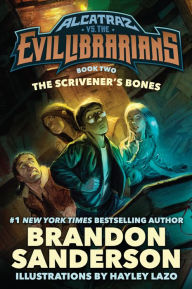




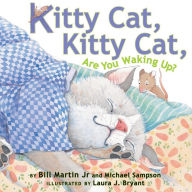

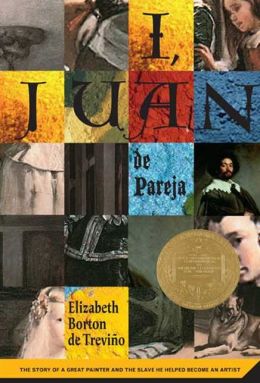
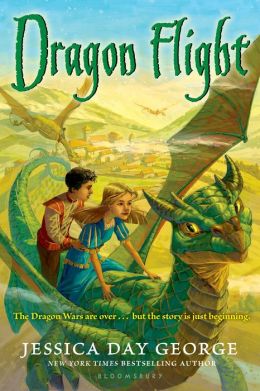


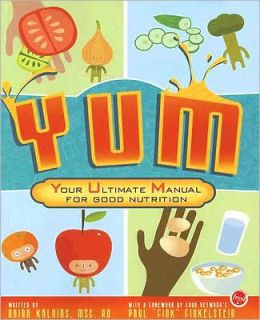
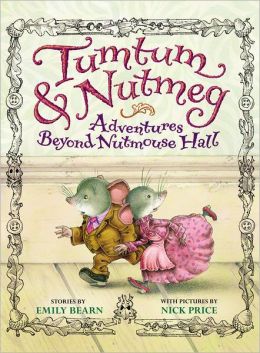

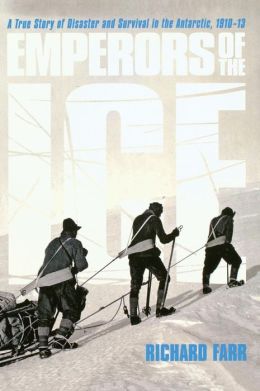
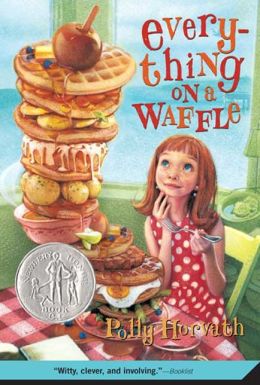

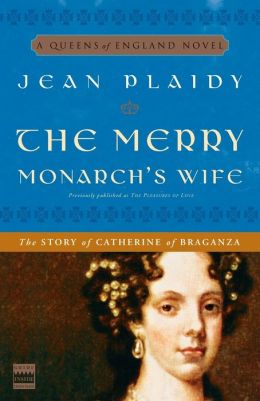
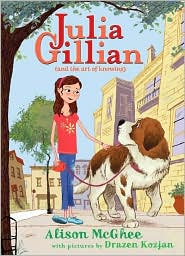

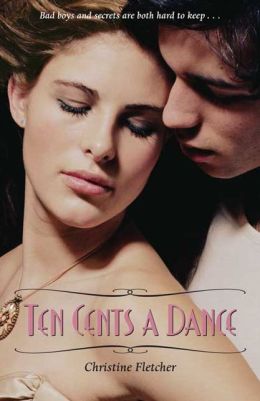
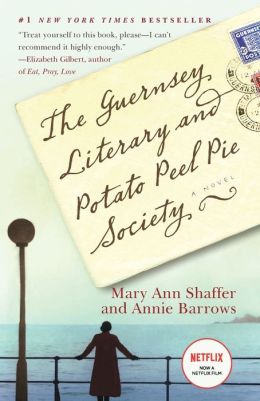
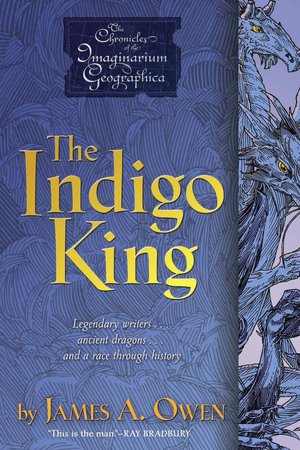



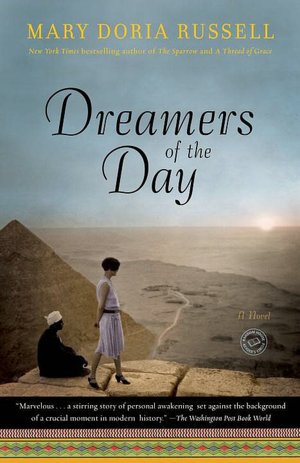


“Jingle bells” song reminds us about the arrival of Christmas. And Christmas means gifts and fun. This Christmas present your family, friends and close acquaintances living in Portugal with gifts from www.giftbasketsportugal.com.pt specialized for delivery to Portugal.
Speak a gift featured language that your loved terms will be happy to hear. Certainly, this language is the one that every celebration loves to hear, again and again. From www.giftbasketsspain.es